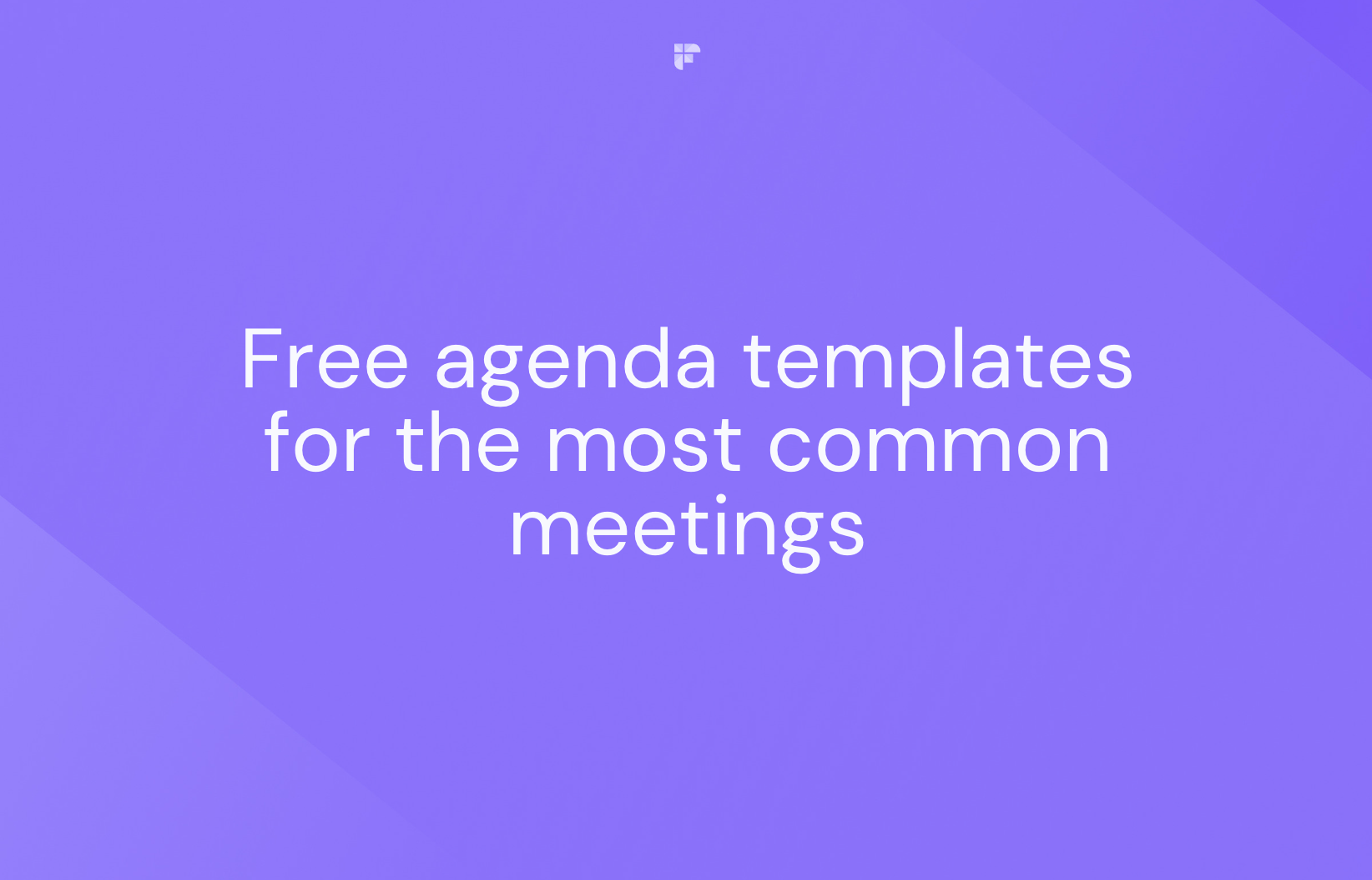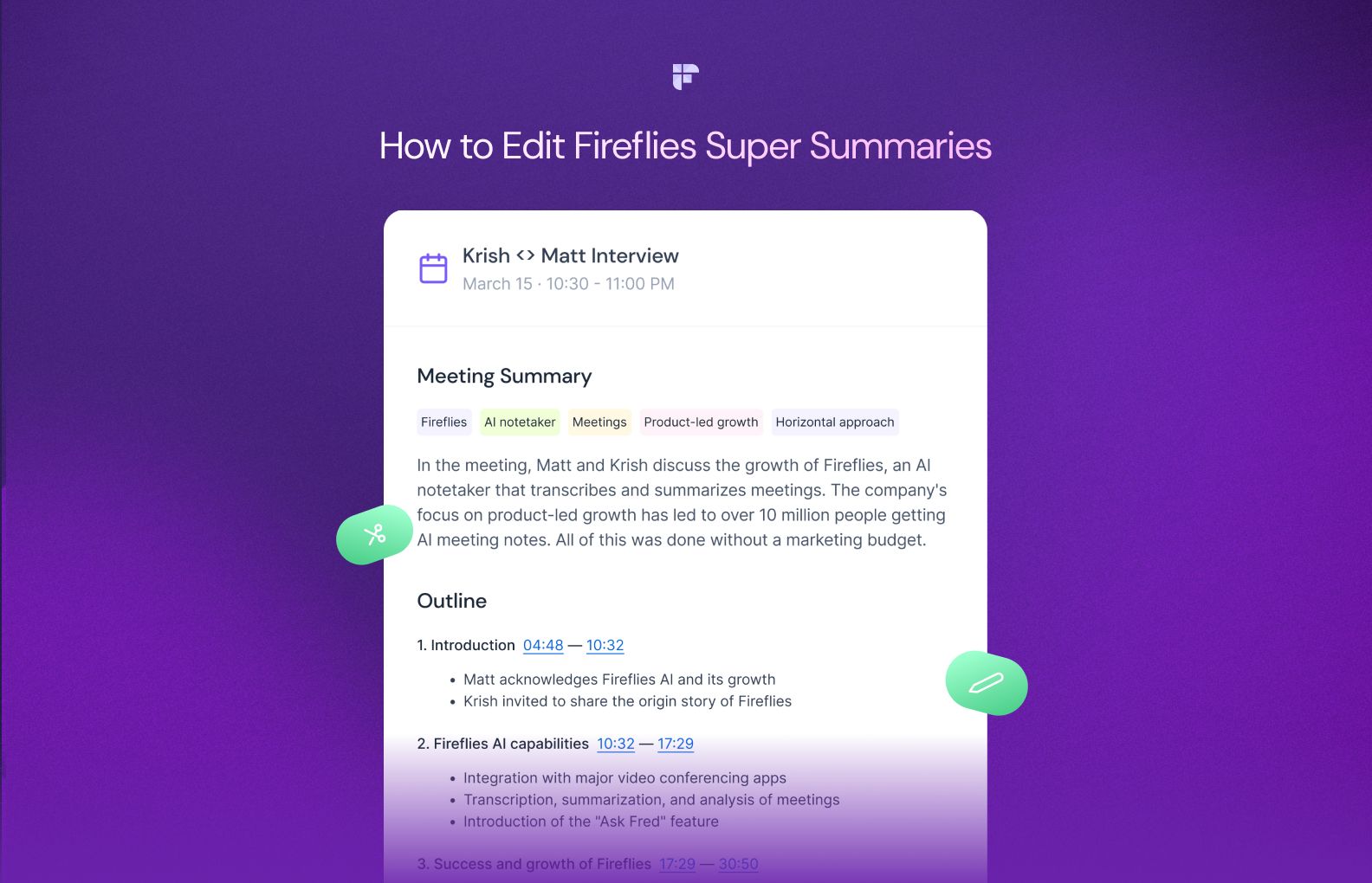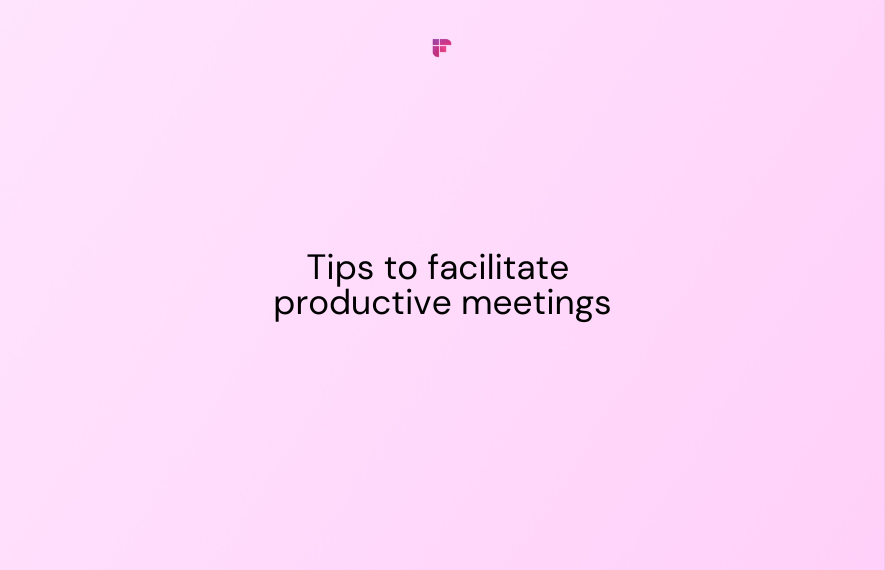If you've ever found yourself in a meeting reaching for your phone every few minutes because it feels totally unproductive and boring, we guarantee you're not alone!
But let's face it. Meetings are a fundamental part of professional life, even though they can often feel like a big waste of time for you and your team if you have one.
However, with the right plan and strategies, you can turn your meetings into engaging and productive sessions that drive meaningful outcomes.
In this blog post, we will delve into the top seven strategies to best facilitate a meeting that is not only productive but also engaging.
Also, to illustrate these strategies, we will use real-world examples and show how Fireflies AI can enhance your meetings by providing automated meeting transcriptions, action item tracking, post-meeting insights, and more.

1. Set clear objectives and agendas
The foundation of facilitating a successful meeting is a clear sense of purpose. Before scheduling a meeting, define its objectives and create a detailed agenda. This agenda should outline what needs to be discussed, who should attend, and the expected outcomes. For example, if you're planning a marketing strategy meeting, your agenda might include topics like market research, target audience analysis, and campaign planning.
Real-world example:
Imagine you're a project manager planning a kickoff meeting for a new project. Your objective is to ensure all team members understand the project's scope and goals. Your agenda might include introductions, a project overview, roles and responsibilities, and a timeline discussion.
How Fireflies AI Helps:
After every meeting, Fireflies.ai generates customizable meeting summaries highlighting key takeaways, action items, and performance metrics discussed. This ensures that all participants clearly understand the meeting outcomes and next steps. Use this information to craft objectives and agendas for your next meeting.

2. Keep it lean and relevant
In today's fast-paced work environment, no one wants to sit through lengthy meetings that often veer off-topic. To facilitate a meeting successfully, keep them engaging and productive, and aim for brevity and relevance. Stick to the agenda and avoid discussing unrelated matters. If a topic arises that's not on the agenda but requires attention, consider scheduling a separate meeting to address it.
Real-world example:
A weekly sales team meeting should focus on sales performance metrics, customer feedback, and strategy adjustments, all sales activities made easier by AI. Avoid spending excessive time on administrative matters or discussing unrelated topics like office supplies.
How Fireflies AI Helps:
Fireflies AI's automated transcriptions and summaries help you identify and eliminate off-topic discussions. By highlighting key points and action items, you can easily spot deviations from the agenda and address them promptly.

3. Foster participation and inclusivity

Engaging meetings encourage active participation from all attendees. When you facilitate a meeting, create an inclusive atmosphere where everyone feels comfortable sharing their ideas and opinions. This is even more imperative if you have a remote team. Encourage team members to speak up, ask questions, and offer insights. To foster inclusivity, consider implementing round-robin discussions or digital collaboration tools for remote participants.
Real-world example:
In a design team meeting, give each member a chance to present their concepts and receive feedback. Use collaborative tools like digital whiteboards or online polling to involve remote team members in real-time.
How Fireflies AI Helps:
Fireflies AI's transcriptions have speaker labels that can help you track who participated and what they contributed. This information is valuable for ensuring everyone's input is considered and acted upon.
4. Manage time effectively
Time is a precious resource, and meetings that run over their allotted time can be counterproductive. In fact, 55% of remote workers think that most meetings "could have been an email." So, to facilitate a meeting, keep it on track, and make it feel productive to your attendees, setting a strict schedule and sticking to it is vital. Assign time limits to each agenda item and designate a timekeeper to ensure adherence. If necessary, use a timer to remind participants of the remaining time for each topic.
Real-world example:
In a project status meeting, allocate 15 minutes for each team member to manage time effectively to report progress and challenges. Use a timer to ensure that discussions stay within the time limits.
How Fireflies Helps:
Fireflies.ai Super Summaries can be customized to track time spent on each topic, providing time-stamped, clickable summaries for efficient review and time management. This ensures a more focused and productive discussions.
1. Sales
2. Daily huddles
3. 1-on-1 meetings
5. Use visual aids and interactive tools
When you facilitate a meeting, visual aids, such as slides, charts, and diagrams, can make meetings more engaging, more interactive, and easier to follow. They help participants visualize complex information and stay engaged. Additionally, interactive tools like polls, quizzes, and brainstorming sessions can encourage active participation and generate valuable insights.
Real-world example:
During a product development meeting, use a presentation to showcase design concepts and user feedback. Conduct a live poll to gather opinions on design preferences and prioritize features.
How Fireflies Helps:
Fireflies allows you to capture video of your meetings so you can listen, read, and watch what happened in meetings you were a part of and even those you missed. This provides context and a comprehensive record of the meeting's content and engagement activities.

6. Assign action items and follow-up
A productive meeting should result in actionable outcomes. Assign clear action items to responsible individuals, specifying deadlines and expectations. Follow up on these action items in subsequent meetings to track progress and ensure accountability. This approach helps prevent discussions from becoming mere talk without action.
Real-world example:
You're a manager in a project review meeting, assign action items for addressing identified issues and improving project efficiency. Follow up in the next meeting to review the progress made on these action items.
How Fireflies Helps:
Fireflies AI can help you track action items by automatically highlighting them in the meeting summaries. This makes it easy to compile a list of tasks and monitor their status over time.
7. Summarize and conclude effectively

At the end of your meeting, summarize the key points discussed and the action items assigned using AI summary generator tools or manually. Reiterate the meeting's objectives and outcomes. This summary serves as a reference for participants and ensures that everyone leaves with a clear understanding of what was accomplished.
Real-world example:
In a team brainstorming session, conclude by summarizing the top ideas generated and the next steps for developing them into actionable plans.
How Fireflies Helps:
Fireflies provides comprehensive meeting summaries that are fully customizable. The 5-part summaries include keywords, a meeting overview, action items, bullet-point notes, and a meeting outline. You can modify the output of these summaries based on your use case and even teach Fireflies how to take meeting notes to extract only the insights you need.
💡 Harness the power of AI to make your meetings more productive
Use Fireflies to help plan, encourage active participation, and ensure consistent follow-up strategies for a successful meeting.
Transform your meetings and boost productivity with these strategies
Facilitating engaging and productive meetings is essential for achieving meaningful outcomes in any organization.
By implementing the seven strategies outlined in this blog post, you can transform your meetings from mundane and unproductive gatherings into dynamic and effective sessions.
Additionally, Fireflies AI's features, such as automated multi-language meeting transcriptions, action item tracking, and post-meeting insights, can streamline your meeting facilitation efforts, enhance the overall experience for both facilitators and participants and ensure the success of your meetings.






